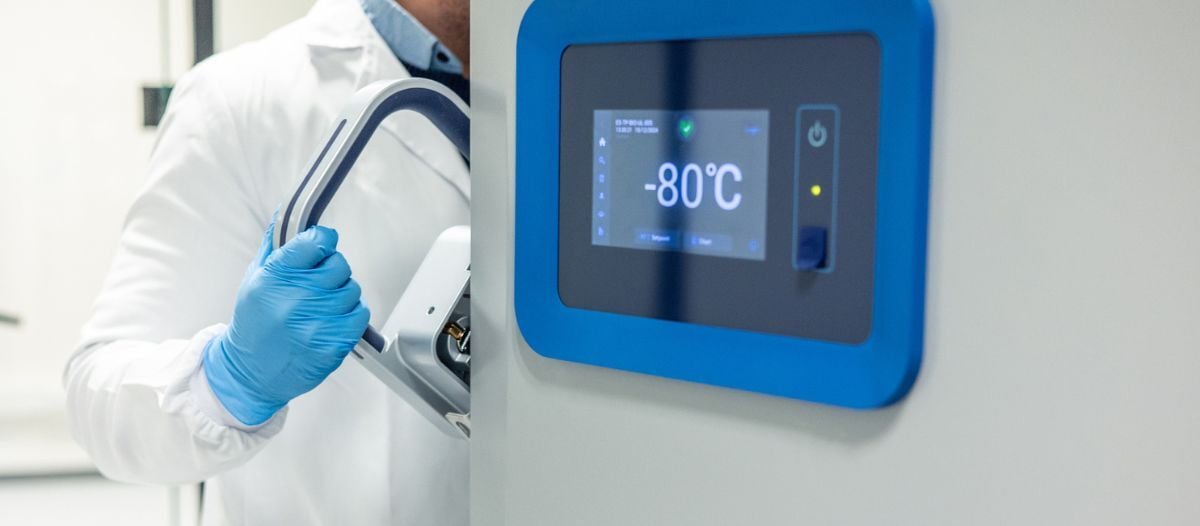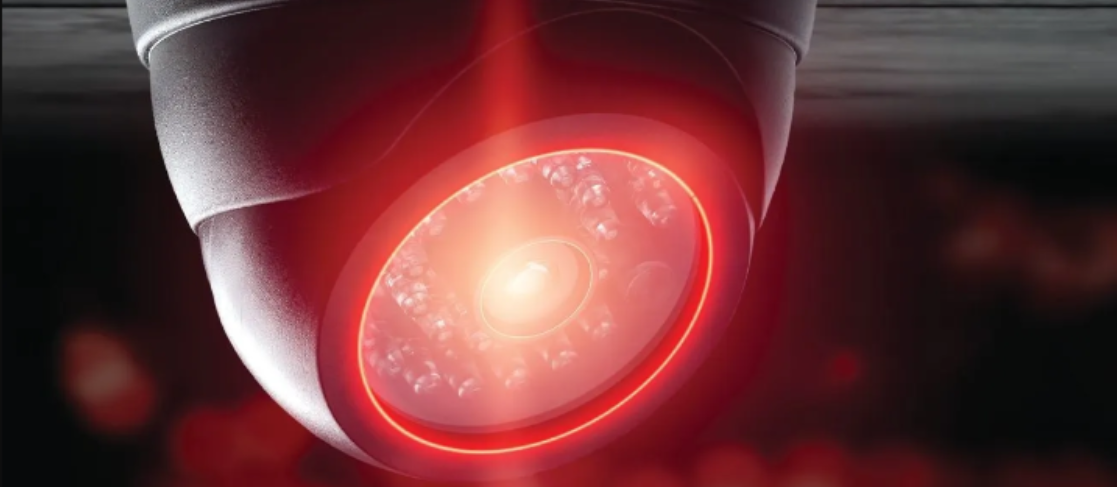The Cold Facts
Medical freezer & cold storage management

Cold storage systems are the unsung heroes of health care infrastructure. In plasma donation centers, hospital labs and pharmacies, their role is vital in preserving the integrity of biologics, medications and research samples. Temperature deviations, even minor, can render sensitive products ineffective — or worse, dangerous. Despite their critical function, cold storage units often receive attention only when they fail.
Foundational principles: Installation for long-term performance
Installation is more than plugging in a unit. Medical-grade freezers, particularly those operating at -30 C, -80 C or colder, require a controlled environment for optimal function. Key considerations include:
-
Site assessment: Before delivery, evaluate the floor structure for weight-bearing capacity, ensure access to dedicated circuits and confirm HVAC capacity to manage ambient heat output.
-
Power quality: Voltage fluctuations and surges can destroy compressors and control boards. Medical facilities should install line conditioners and uninterruptible power supplies (UPS) for critical equipment.
-
Ventilation and airflow: Units should not be placed flush against walls. Follow manufacturer guidelines for rear and side clearance to ensure condenser efficiency.
-
Data cable planning: Prewire ethernet or wireless temperature monitoring systems during installation. Avoid retrofitting, which risks damaging insulation.
A growing number of hospitals are incorporating cold storage layout planning into their commissioning and validation processes, especially for new pharmacies or blood banks.
 Routine maintenance: Prevention as protection
Routine maintenance: Prevention as protection
Preventive maintenance is not optional — it is essential. Like any mechanical system, refrigeration components degrade over time. Plasma centers, where freezers cycle more frequently due to donor volume, are particularly vulnerable to wear.
Best practices include:
-
Monthly visual inspections for door seal integrity and gasket wear.
-
Quarterly condenser cleanings, especially in dusty environments.
-
Semi-annual defrosting protocols for manual-defrost freezers (automated systems still require checks).
-
Lubrication of moving components in walk-in refrigeration units.
-
Alarm validation testing to ensure audio and remote notifications work under real failure scenarios.
One frequently overlooked point is ambient temperature. Overheated equipment rooms contribute to premature compressor failure. Ideal room conditions should remain under 25 C (77 F).
In pharmacies, daily min/max checks are mandated in many jurisdictions. Digital loggers that sync with cloud systems are becoming standard to replace paper-based charts.
Maintenance contracts: Operational security through partnership
A strong maintenance contract is not just a budget item — it is an operational safeguard. The most effective contracts align with risk-based maintenance principles and contain:
-
Brand-specific technician expertise.
-
24/7 response time clauses for emergency failures.
-
Access to parts inventory within 24 to 48 hours.
-
Remote support capability, including alarm resets or software diagnostics.
-
Annual performance reviews with trending reports and risk analysis.
Plasma center operators reported a 28 percent reduction in downtime after switching to a performance-based maintenance contract with predictive analytics and quarterly training for their staff.
Emergency preparedness: Anticipating the unthinkable
Natural disasters, power outages, cyberattacks — resilience in cold storage requires foresight.
Backup power strategies:
-
Freezer prioritization: Not all freezers need emergency backup — but plasma, vaccines and tissue banks do. Facility managers and operational staff should ensure their facility’s generator covers all essential equipment.
-
Fuel supply: Backup generators must be tested monthly and fuel quality maintained. Diesel degradation is a common failure point after six months.
Dry ice and liquid nitrogen:
-
Use with caution: While dry ice (-78.5 C) and LN2 (-196 C) offer ultra-low storage, they also present asphyxiation risks in confined spaces. Install oxygen depletion sensors and ensure proper staff PPE and training.
-
Vendor relationships: Establish contracts with at least two dry ice vendors, especially in regions prone to hurricanes or snowstorms.
Continuity of operations plan (COOP):
A COOP should outline:
-
Cold chain transfer procedures.
-
Mobile refrigeration alternatives.
-
Regulatory notifications in case of product compromise.
Some organizations now integrate COOP protocols into good manufacturing practice (GMP) audits.
 Continuous monitoring & smart alarms
Continuous monitoring & smart alarms
Manual logs are no longer sufficient. High-performing facilities implement redundant digital monitoring systems with:
-
Validated sensors (±0.5 C accuracy).
-
Battery backups for at least 48 hours.
-
Remote alerts with escalation paths (text, email, app).
-
Audit logs for regulatory compliance.
Case study: One blood bank integrated its smart monitoring system with their building automation system (BAS) and reduced unplanned temperature excursions by 75 percent within six months.
Smart alarms must include human redundancy. A designated on-call responder should receive test alerts monthly, and teams should be trained to respond even after hours.
Regulatory compliance: A culture, not a checklist
Medical cold storage is heavily regulated. Failure to comply results not only in product loss, but also in legal exposure.
Key Standards:
-
FDA 21 CFR Part 11 – Governs electronic records and signatures, essential for digital temperature logs.
-
USP <1079> – Offers guidance for temperature-sensitive product handling and distribution.
-
WHO PQS Guidelines – Crucial for vaccine storage in global health operations.
-
EMA Guidelines on GDP – Cover storage and transportation in the European Union.
Inspections often focus on traceability. Facilities should retain calibration certificates, maintenance logs, excursion reports and alarm audits for at least every two to five years, depending on local laws.
Shared lessons across the health care ecosystem
Challenges faced by plasma centers often reflect broader cold-chain vulnerabilities.
|
Storage Type |
Temperature Range |
Common Risks |
|
Blood products |
(1°C to 6°C) |
Sensor miscalibration, high door activity |
|
Vaccines |
(2°C to 8°C) |
Compressor cycling, human error in access |
|
Plasma |
(-30°C to -40°C) |
Door seal failure, power loss, ice buildup |
|
Biologics |
(-70°C or colder) |
LN2 handling errors, thermal shock on transport |
Applications beyond plasma:
-
Clinical trials: Storage for investigational drugs must meet stricter documentation protocols.
-
Mobile units: Blood drives and vaccination campaigns often require portable coolers with validated holdover times.
-
Veterinary hospitals: Biologics and tissue samples demand similar storage standards and face similar risks.
Hospitals can adopt plasma center best practices such as:
-
Quarterly training refreshers for pharmacy staff.
-
Cross-training maintenance and clinical staff on alarm systems.
-
Integrating BAS alerts with nurse call systems in critical areas.
 Future trends: Technology & innovation
Future trends: Technology & innovation
Cold storage is evolving. FM teams embracing smart systems and sustainability initiatives will lead the future.
Predictive maintenance:
AI tools can track vibration, power usage and thermal cycles, predicting failures before they occur. Combined with ticketing systems, these systems allow remote teams to triage and prioritize freezer issues across multiple locations.
Sustainability:
-
Natural refrigerants like R290 (propane) are replacing older systems.
-
Energy recovery systems use heat from compressors for facility heating.
-
Solar-powered units are being tested in remote clinics worldwide.
By 2030, the global medical cold chain market is expected to exceed US$25 billion, driven by biologics, mRNA therapies and decentralized care.
Conclusion
The medical freezer is more than a box — it is a life-preserving device embedded in every corner of modern health care. Its reliability reflects the discipline, foresight and commitment of the professionals who manage it. Plasma centers may lead the way, but their lessons are universal: install with precision, maintain with rigor, monitor with intelligence and prepare with vision. In doing so, FMs safeguard not only samples — but lives, supply chains and scientific progress.

Jose Daniel Lopez Zabolotnyj is a mechanical engineer with more than 15 years of experience specializing in FM and utility systems for the pharmaceutical and biotechnology sectors. He serves as FM at KEDPlasma USA, overseeing the maintenance and operational efficiency of more than 70 plasma collection centers across the U.S. His work focuses on optimizing infrastructure through smart maintenance strategies, energy conservation, and advanced tools like AI-powered ticketing systems. Throughout his career, Zabolotnyj has led critical engineering functions in high-demand environments, including plasma centers, supplement production facilities and pharmaceutical plants. His expertise spans HVAC, compressed air, clean steam, purified water, automation/BMS systems, and GMP compliance. He has played key roles in new facility startups, equipment lifecycle planning, and cross-functional capital projects. He is committed to becoming a subject matter expert in pharmaceutical engineering services. His professional vision centers on delivering safe, efficient, and sustainable environments that support healthcare innovation and improve patient outcomes.
References
• FDA 21 CFR Part 11: fda.gov/media/75414/download
• EMA GDP Guidelines: ema.europa.eu
• ASHRAE Handbook – HVAC Applications (Healthcare Facilities)
• CDC Vaccine Storage and Handling Toolkit: cdc.gov/vaccines/hcp/admin/storage/toolkit/index.html
• Global Cold Chain Alliance (GCCA): gcca.org
Read more on Operations & Maintenance and Project Management or related topics Asset Management , Building Systems and Risk Management
Explore All FMJ Topics









